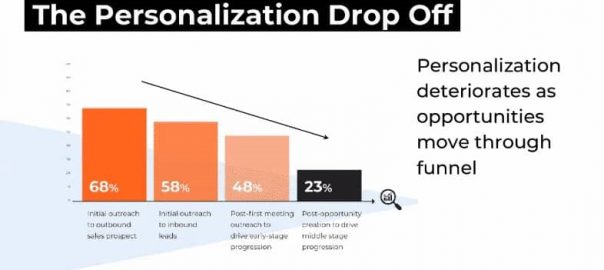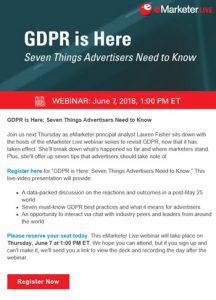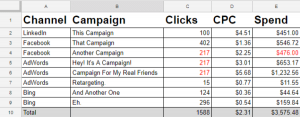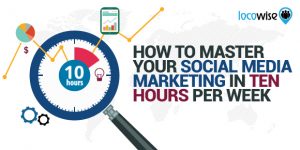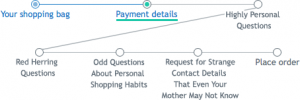A marketers’ guide to personalization and how these tactics can transform campaigns.
With so many brand messages flooding customer inboxes and smartphones, it’s no wonder marketers are having a hard time connecting with audiences. Even with more technology solutions available than ever before, 74% of marketing leaders say they struggle to scale their personalization efforts, according to a Gartner survey. What’s more, that same data suggests brands may risk losing 38% of customers due to poor personalization.
Customers want to be treated as individuals, not as users, accounts, or prospects.
In this guide to personalized marketing, we’ll dive deep into personalization and its potential to increase customer engagement. We’ll cover:
- What is personalization?
- Examples of personalized marketing.
- Who uses personalization in marketing?
- How personalization can help marketers.
- What are the challenges of personalized marketing?
- What marketing technology is needed for personalization?
Estimated reading time: 16 minutes
What is personalization?
Personalization is a one-to-one marketing strategy that seeks to better understand and connect with customers. It uses real-time data and insights to deliver highly relevant messages and offers.
Personalization as a strategy represents a shift from what had been a traditional one-size-fits-all approach that prioritizes reach and breadth of an audience to methods that target customers based on their needs and interests. It places a heavy emphasis on tailoring messages to specific individuals or segments of buyers.
One might think of personalization as a set of tactics marketers employ that primarily focus on remembering key details about customers, but they’d only be partially right. Personalization encompasses much more. It’s about changing the face of marketing, moving from assumption-based, batch-and-blast approaches to meaningful, personalized customer experiences.
“If you stop at adding someone’s first name to an email I think you’re missing this changing face idea,” wrote speaker and marketing consultant John Jantsch. “To me, personalization happens when a marketer or salesperson can take a piece of content and make it more useful for a specific prospect or customer.”
Personalization is the process in which brands tailor their offers, communications, and advertising to the needs of buyers. Customers – whether B2B or B2C – expect customized experiences, and marketers must lean on smart targeting solutions to fully understand the people they’re selling to. Marketers using personalization tactics apply the insights gleaned from these audiences to guide customers through the buying process.
Seth Godin, entrepreneur and bestselling author, summed up the goal of personalized marketing on his blog: “Personalization wasn’t supposed to be a cleverly veiled way to chase prospects around the web, showing them the same spammy ad for the same lame stuff as everyone else sees. No, it is a chance to differentiate at a human scale, to use behavior as the most important clue about what people want and more importantly, what they need.”
Examples of personalized marketing
Today’s customers expect personalization in each interaction they have with brands. Whether it’s name recognition, location-based recommendations, or messages based on preferences, marketers need practical ways to enact personalization across their campaigns to meet this demand.
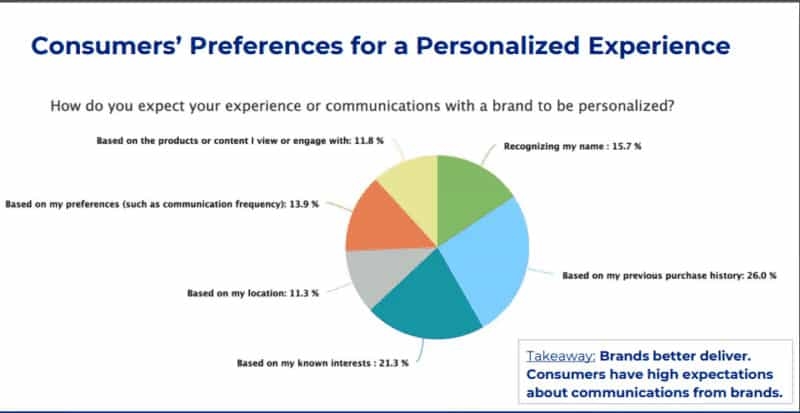
Customers also expect seamless experiences wherever they encounter brands. Any disruptions they run into will almost inevitably cause them to drop off.
This is why marketers must ensure their content meets the personal needs of their audiences wherever they find them. Many use customer journey analytics to help ensure these experiences are optimized and personalized across all channels.
While the principles of personalization can be applied to both B2C and B2B brands, their application often looks different. Here are some examples of personalization in both areas.
B2C personalized marketing examples
Personalizing marketing for consumers may seem straightforward to many brands, but it’s actually much more complex. Consumer preferences are constantly changing, and marketers need to offer solutions to their current needs and anticipate those that may arise in the future.
Fortunately, emerging technologies over the past few years have allowed B2C marketers to gain relevant insights from consumer audiences, giving them the tools they need to offer engaging, personalized content.
Here are three examples of how B2C brands can use personalization to reach more consumers.
Data-driven strategies. Marketers rely on customer data to make their marketing engines run, and this is even more important when it comes to personalization. Collecting first-party consumer data with tools like customer data platforms (CDPs) can help marketers learn what their audience demands and develop solutions to fulfill those needs.
Marketing automation. Brands have more consumer data to analyze than ever before, which can be a double-edged sword. A great number of potential insights may be lost due to marketing team capacity issues or poor technological infrastructure. This is why many B2C teams are embracing marketing automation solutions to improve data collection, task streamlining, and audience analysis – all of which help improve personalization.
Artificial intelligence solutions. AI tools are all the rage in marketing circles today, and for good reason – their machine learning capabilities can help brands provide highly personalized experiences to their customers. They can learn from consumer behavior and improve marketing tactics with in-depth analysis. However, these technologies are far from perfect, so B2C marketers should ensure there are proper safeguards in place before deploying them.
B2B personalized marketing examples
Personalization among B2B brands looks a lot different than in its B2B counterparts. Aside from the obvious differences in marketing to consumers versus marketing to companies, B2B marketers may face frequent data issues – outdated, siloed, or low-quality data – that prevent them from honing in on actionable business information. What’s more, these professionals are marketing to high-level decision-makers whose interests and priorities are more difficult to decipher than the average consumer.
Marketers must understand these buyers inside and out – especially those in the B2B space. Here are three B2B personalized marketing examples to help brands build these complex relationships.
Account-based marketing. Many B2B marketers are turning to account-based marketing (ABM) strategies and tools to help deliver targeted advertising and personalized content to high-value accounts. Although this marketing method has been around for more than a decade, advances in technology are allowing marketers to glean relevant data from high-level purchase decision-makers, such as buying intent and quantitative business information. By implementing an ABM strategy with one of many available platforms, marketers can foster greater personalized connections with businesses.
Personalized content recommendations. Understanding where your visitors are in the content funnel is critical, but guiding them through it is even more important. Brands can offer B2B buyers personalized content recommendations at each funnel stage, using information such as past purchases, downloads, or search history to make informed decisions. Showing buyers you’re aware of their needs as a business can help build that much-needed trust.
Location-based marketing. Many businesses operate from a single geographic area and primarily serve customers around them. B2B marketers can better reach buyers by providing messaging that speaks to their locality, whether it’s upcoming events pertaining to them or special deals for their area.
While B2B and B2C personalization tactics often differ, many can be applied to both types of brands. Here are some examples of the most popular personalized content and strategies.
Personalized landing pages. There is no set of rules that will ensure personalized landing page success. But brands that include information that is personal to the visitor – their name, geographical location, useful content pertinent to their situation – can foster greater engagement.
Product recommendations. Giving customers product suggestions in the form of emails or ads can show them you care about their needs. And this practice can positively impact sales too; product recommendations can account for up to 31% of e-commerce site revenues, according to data from e-commerce personalization company Barilliance.
Connecting video experiences. Videos have the potential to increase customer engagement, especially if they’re personalized. That’s why brands may want to consider creating customized videos for individual customers. When used properly, these can help companies show customers they care about their needs.
Social media advertising. Marketers have many personalization capabilities available on social media platforms. From retargeting campaigns to personalized messaging via chatbots, brands can use these tools to customize their messaging for customers on a personal level.
Customized email messages. Email is one of the most effective mediums to use when personalizing marketing campaigns. With email platforms, brands can send customized messages, offers, images, and even cart abandonment notifications (for e-commerce sites).
Who uses personalization in marketing?
Personalization is used by some of the most successful brands in our industry to increase customer engagement. Using data gleaned from what customers purchase, watch or search, these marketers produce personalized messages, recommendations, videos, and more to keep their interest.
Here are some of the top brands that have enacted successful marketing personalization campaigns.
Bringg. Cloud logistics platform Bringg recognized the value of customer journey data when it came to personalization, so they chose an attribution platform to glean more insights. They discovered that their newsletter and targeted landing pages led to more business interactions, so they invested heavily in personalizing content in both of these areas. Sending brands to the most relevant pages and customizing newsletters to fit their needs led to more than a 20% increase in Bringg’s demo bookings.
Nuxeo. Content management platform Nuxeo wanted to improve user experience for the brands that use its platform, so they decided to implement machine learning solutions. In order to improve content engagement, these algorithms gathered insights from readers and recommended further reading based on their preferences. These deep learning solutions increased Nuxeo’s blog engagement by 34%.
Nike. One of Nike’s most effective personalized marketing assets is its primary app. The software allows users to connect with Nike Plus rewards, receiving custom offers based on their in-app behavior. It also gives them access to new products, further incentivizing downloads.
The Nike Training Club app also provides customers with personalized experiences – in its case, during their everyday exercise routines. It recommends personal adaptive training plans for users based on their workouts and goals.
Shutterfly. The well-known photography product company offers a number of personalized features for customers who create accounts and download their app. If users grant access to their photos, Shutterfly will identify which have people and then place them on various product images (mugs, notebooks, etc.) that customers can buy on the app. Its “Make it a Thing” campaign amplifies the personalization options even further with additional customization features.
Target. A few years back, Target rolled out a personalized customer loyalty program that offered savings on purchases, birthday rewards, nonprofit giving, and a variety of customized offers. Customers who use this program, titled “Target Circle,” receive special offers based on their purchase history – they’re also offered recommendations for online and in-store purchases.
Coca-Cola. The company launched its “Share a Coke” campaign back in 2011, which was aimed to reach millennials. The campaign placed some of the most popular first names of this generation on bottles (over 800, according to AdAge). Coca-Cola eventually added unique personal phrases to these bottles, which all seemed to pay off; the company increased its sales volume for the first time in four years during the campaign.
How personalization can help marketers
Although many brands recognize the importance of personalization, some still view it as an optional add-on to their current campaign setups. They may see it as nothing more than a nice bonus to their product or service offerings, or worse, a distraction.
However, neglecting personalization is no longer an option for marketers – at least those who want to succeed in our individualized digital landscape.
“One-to-one personalization is the future,” said Ehren Maedge, GM of North America at customer engagement platform MoEngage, in his presentation at our MarTech conference. “Brands need to get there quickly or be displaced by alternatives.”
Marketing personalization can provide several benefits for brands, including:
- Increased customer feedback.
- Improved customer experience.
- Increased customer loyalty.
- Improved lead nurturing.
- Better customer retention.
What are the challenges of personalized marketing?
Many marketers struggle to integrate personalization into their campaigns. Whether it’s finding creative ways to get their messages to the right audience in the right moments or getting their channels in sync, brands may face a number of challenges when introducing personalization into their campaigns.
Here are some of the main challenges marketers face when seeking to introduce personalization into their campaigns.
Technology limitations. Many brands cite the lack of sophisticated marketing technology as a barrier to personalization. A report from Adobe and Incisiv found that 58% of retailers and 67% of travel firms claim they don’t have the technology they need to support their personalization strategies. In addition, a survey from Yieldify found that 36% of marketers claim their personalization tools lack functionality and 34% believe those same technologies are too expensive.
Whether it’s integrating artificial intelligence platforms within their infrastructure or allocating enough budget to procure these personalization technologies, marketers have their work cut out for them.
Fortunately, personalization campaigns can still be successful without the latest, greatest technology. Most marketing tools available today – CRM, email technologies, social engagement tools, and more – have personalization capabilities. And, marketers lacking the technology resources for more advanced tools can effectively leverage their current assets, aligning the strengths of each platform with their personalization goals.
Consumer data silos. Organizational alignment is critical to the success of personalization campaigns. Without it, brands risk alienating customers with unorganized communications, such as sending duplicate or conflicting messages. This issue often arises between sales and marketing teams – two groups that have historically run into coordination challenges due to data siloing.
Brands need solutions to consolidate data between these two groups, which is why many marketers turn to CDPs. These technologies can help centralize customer data, tracking prospects across multiple channels.
Respecting consumer privacy. There’s a fine line between personalization efforts that show customers that brands care for them and those that feel intrusive. People care about their privacy and will only respond well to personalized communication that uses the information they’ve consented to share.
Still, many marketers bemoan the fact that upcoming legislation will restrict companies’ use of third-party data, fearing this will disrupt their marketing strategies.
However, this view fails to account for the treasure trove of value found in first-party data. This information offers actionable insights from customers, and collecting it adheres to consent regulations, making it one of marketers’ best resources for creating personalized campaigns.
What marketing technology is needed for personalization?
With so many brands adopting personalization technologies and strategies, it’s clear that it will play a major role in the future of marketing. 89% of online businesses already invest in personalization, according to Forrester, and data from Statista found that 60% of marketers claim their digital content is extensively personalized. SmarterHQ even found that 51% of marketers rate personalization as their top priority.
But, despite this growing popularity of personalization, many brands have trouble implementing customized frameworks and strategies. They’re looking for practical ways to introduce personalization to campaigns without alienating customers in the transition.
To help with this issue, here are some of the ways marketers can introduce personalization strategies and technologies into their marketing.
Gather and leverage market data using a CDP. “The start of personalization is data,” writes Songtham Tung, SaaS consultant. “Data is information, and with enough of it, we can begin to identify patterns or trends that can help us make smarter decisions.”
Customer data is a major part of the foundation of any personalization strategy. Brands that can acquire clean data and draw actionable insights from it can make stronger connections with audiences.
But this is easier said than done. Information such as customers’ shopping history, location, buying behavior, and other personal data is more protected than ever due to the advent of consumer privacy legislation such as the GDPR and CCPA. These laws limit brands’ ability to leverage data from third-party cookies, but this doesn’t mean customers aren’t willing to share their information. It just means that brands must practice proper data compliance to collect it.
Respecting consumer privacy through consent management can help brands build stronger customer trust and collect valuable data. To do this, marketers should focus on gathering first-party customer data via a CDP or similar technology.
Many brands also use consent management platforms (CMPs) to adhere to these privacy laws, but marketers should note that a good deal of them can only perform basic functions, such as showing simple banners briefly mentioning their data policies. These types of platforms fail to protect user privacy and respect the data regulations themselves.
Instead, marketers seeking to enhance personalization with first-party data – all the while complying with consumer privacy laws – should consider adopting a compliance platform. These can help control and govern the flow of customer data with autonomous enforcement of user privacy preferences. Combined with a personalization strategy, marketers can strengthen customer trust and keep them coming back for more.
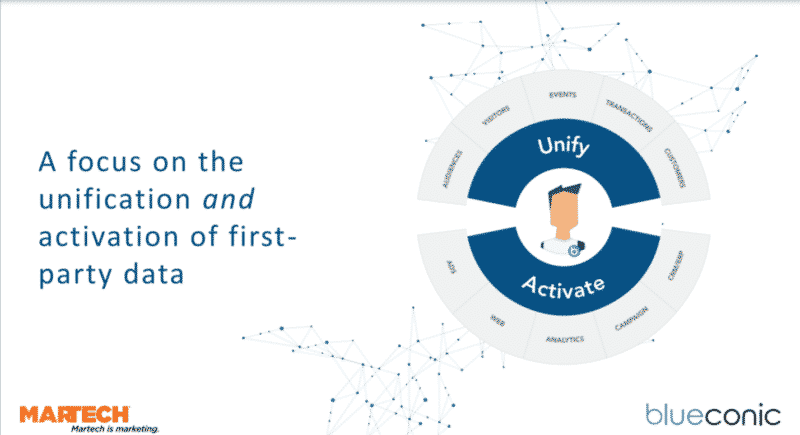
According to the late Steve Jobs, brands have an imperative to anticipate their customers’ needs: “Get closer than ever to your customers. So close that you tell them what they need well before they realize it themselves.” Gathering this valuable customer data can make this job easier.
Generate buyer personas with a CRM. Many marketers recommend crafting buyer personas – outlines of your audience based on customer data – to gain a better understanding of their market. These fictionalized profiles are designed to give brands a more accurate picture of customer wants and needs.
Using demographic, firmographic, and psychographic data gleaned from CRMs, marketers can build profiles that represent their customers’ interests and behaviors. But even this data can prove limiting; marketers need to ensure they craft these personas using personal aspects that don’t always fit their “professional” roles.
Brands can use CRMs to glean customer insights for these personas from in-depth surveys, social media interactions, form fill-outs, and personalized messaging. They can all provide relevant insights for persona creation, but many professionals recommend taking it a step further, focusing on one-on-one interactions.
“To achieve an ROI on your buyer persona initiative, you need to invest in one-on-one interviews with people who have recently considered the product, service, or solution you want them to prioritize,” writes Adele Revella, CEO of Buyer Persona Institute. “This isn’t traditional research involving surveys or focus groups. A skilled interviewer needs to think like a journalist, working without a script and walking each buyer very slowly through every step in their actual journey. The most critical skill is asking follow-up questions to probe on every response, which is where you’ll gain deep insights into the buyer’s motivations, objections, and decision criteria.”
Plan out your customer journey content with analytics. Too many marketers wait to optimize their customer journeys until they’ve launched their campaigns. However, brands that plan out their content with the customer journey in mind can more easily tailor it to meet their needs.
Planning out content for each step of these journeys is made easier with customer journey analytics platforms. These technologies help marketers identify key stages of customer buying experiences and provide actionable insights based on their behavior. The goal is to provide relevant content to customers at each stage of the purchase journey.
Using collected first-party data, marketers can repurpose relevant customer insights into content that corresponds with the awareness, consideration, and decision stages. Some of these content types could include:
- Blog posts tailored to customers’ interests.
- Infographics with data pertinent to customers’ problems.
- Webinars featuring topics customers consistently search for.
- FAQ pages with relevant answers.
- Case studies featuring existing customers in similar situations.
As customers move through the content funnel, marketers should note how much attention they’re paying to personalization. Data from Renegade (shown below) illustrates how personalized efforts tend to deteriorate as customers move through the funnel.
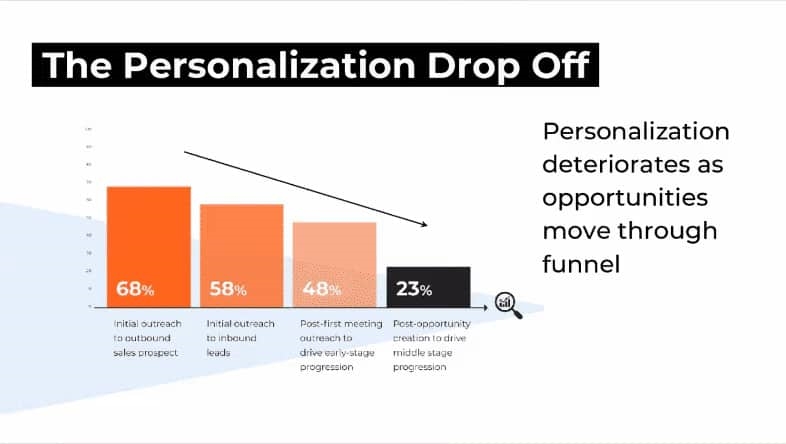
There are plenty of ways to personalize content, but marketers who craft it with customers’ journeys in mind can help build trust with an improved customer experience. Fortunately, the sheer amount of data and technologies available to brands today can help them provide engaging personalization at each customer touchpoint.
The post What is personalized marketing and how is it used today? appeared first on MarTech.
(27)
